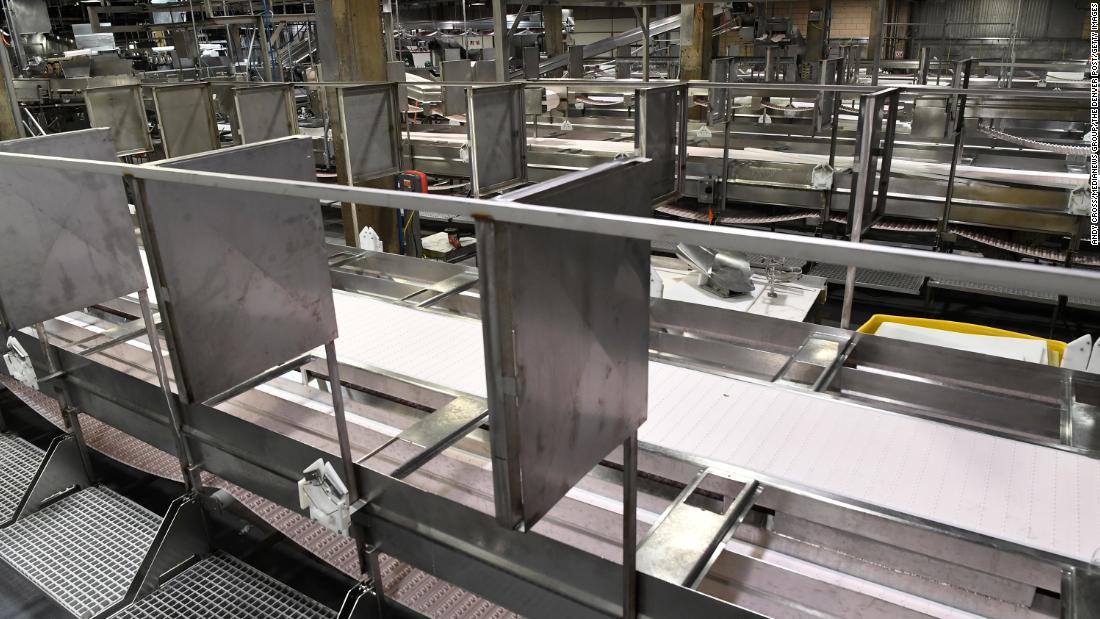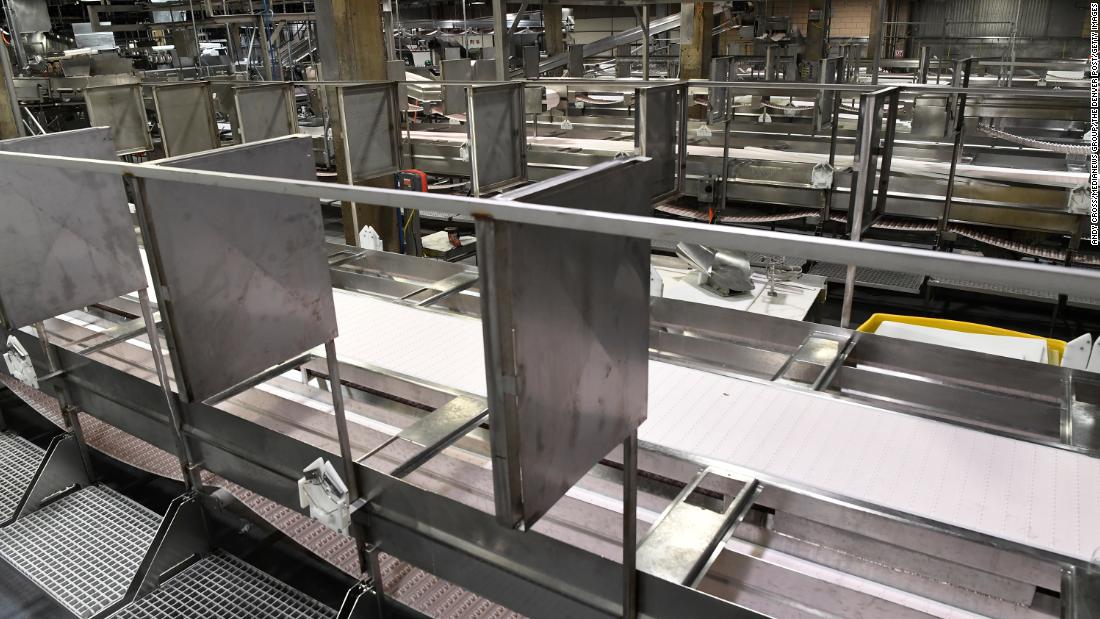[ad_1]

But the order, which gives Secretary of Agriculture Sonny Perdue the power to invoke the Defense Production Act and force companies to keep their plants humming, has not yet forced any shuttered facilities to come back online. Some had already begun to reopen with stricter social distancing measures in place, while others remain offline after the virus swept through employees at more than a dozen major facilities across the country.
“I don’t see it having much effect,” said Stephen Meyer, an economist at Kerns & Associates working with the pork industry. “You can tell anybody to open up a plant, but if the workers don’t show up, it doesn’t work.”
“It’s nice of the President to think we’re important and everything, but I don’t think it’s going to cause very many plants to open,” he added.
High rates of absenteeism, whether from sickened workers or fearful employees staying home to avoid infection, have for weeks plagued the meat-packing industry, where workers often labor in close quarters. A Center for Disease Control and Prevention study released on Friday showed more than 4,900 workers in meat and poultry processing facilities have tested positive for Covid-19, and at least 20 have died.
On a conference call with lawmakers Friday afternoon, Jennifer McQuiston, a top CDC official, said 115 meat and processing facilities in 23 states have reported coronavirus cases.
Trump signed the executive order on Tuesday and claimed it would solve the “liability problems” facing meat companies, some of which were worried about getting hit with lawsuits from employees who may feel forced to work in dangerous conditions. The CDC and Occupational Safety and Health Administration (OSHA) released new guidelines for the meat industry on Sunday that encouraged social distancing measures — but the guidance is not mandatory, and union leaders say companies may not fully follow it.
“They’ve given voluntary guidelines that aren’t going to be enforceable,” said Mark Lauritsen, director of the food processing, packing and manufacturing division at the United Food and Commercial Workers International Union.
Lauritsen said unions would be asking both the Trump administration and state governments for additional levels of personal protective equipment as well as stronger social distancing measures at plants.
“But the fact is there’s no incentive for employers to change,” he said. “It definitely takes a little bit of the concern off of the meat companies.”
Plants remain shuttered
Some of the nation’s largest meat-packing plants — including Smithfield’s Sioux Falls, South Dakota, pork plant and Tyson’s Waterloo, Iowa, pork plant — are still closed after suffering coronavirus outbreaks.
A spokesperson for the company said the testing data from the plant will shape “daily staffing and work plans” but did not say the facility would close.
Trump’s executive order also may not prevent additional plants from closing down or slashing production.
The plant, which according to the company, can typically produce enough beef in one day to feed 18 million people, will remain offline until next week.
The Department of Agriculture said it is working with the supply chain task force to secure sorely-needed personal protective equipment for food supply workers. A department spokesperson told CNN its execution of the order involves directing plants to follow the CDC and OSHA guidance, but the spokesperson stopped short of saying the agency will wield the Defense Production Act against any specific company.
To the extent the administration’s move has teeth, Meyer noted the order does allow the federal government to override the will of state and local officials who may push for a virus-ridden facility to close. For example, South Dakota Gov. Kristi Noem and Sioux Falls Mayor Paul TenHaken — both Republicans — wrote to Smithfield to advocate for the closure of the massive pork plant there in mid-April as the number of positive coronavirus cases at the facility climbed into the hundreds.
But under the new executive order, USDA can push to keep open a plant that a state would rather close.
Minnesota Gov. Tim Walz said on Wednesday that despite the administration’s order, the shuttered JBS pork facility in his state shouldn’t fully reopen until it had proven all workers would be protected.
“No executive order I do or the President does is going to change the fact that that virus will infect you if we don’t do things right,” the Democratic governor said.
Livestock euthanization still necessary
While the President’s executive order came as welcome news to farmers and ranchers as well as to meat companies, pork producers say they will still need support from the Trump administration to euthanize the hogs that grew too large while the processing plants sat idle.
Rachel Gantz, a spokeswoman for the National Pork Producers Council, said farmers are asking for the federal government to indemnify them for the animals they have to put down, as well as provide funding for the euthanization and disposal process.
The temporary shuttering of as much as a quarter of the nation’s processing capacity left many pork farmers stuck caring for animals they had planned to send to market. Operating on a “just-in-time” manufacturing system, farmers typically need to off-load one group of hogs to make room for the next — and without a place to take them, many producers struggled with overcrowding and shouldering the increased costs of continuing to feed animals that should have been brought to slaughter.
Howard “AV” Roth, president of the National Pork Producers Council, said the administration’s move offers hope for farmers struggling to manage a severely backed-up hog supply across the country. But he noted the order came too late for thousands of pigs that farmers will soon need to euthanize.
“Once these animals get too big, the processing plants can no longer take them,” Roth told CNN. “With this order, we know there’s light at the end of the tunnel.”
The JBS plant in Worthington, Minnesota, that is opening solely for the purpose of putting down pigs will begin euthanizing roughly 13,000 animals per day, the company said on Thursday.
“None of us want to euthanize hogs, but our producers are facing a terrible, unprecedented situation,” said Bob Krebs, president of JBS USA Pork. “We will do everything in our power to work with the state of Minnesota to responsibly reopen our facility as soon as possible in support of producers who desperately require a more viable option for their hogs.”
Manu Raju contributed to this story.
[ad_2]
Source link

